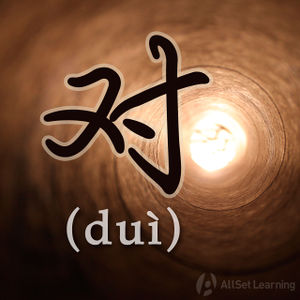Difference between revisions of "Comparing "gen" and "dui""
| Line 19: | Line 19: | ||
<div class="liju"> | <div class="liju"> | ||
| − | * 我 <em>跟</em> 她 说 了,但是 她 不 信。 | + | * 我 <em>跟</em> 她 说 了,但是 她 不 信。<span class="trans">I told her, but she didn't believe me.</span> |
| − | * 我 <em>对</em> 她 说 了,但是 她 不 信。 | + | * 我 <em>对</em> 她 说 了,但是 她 不 信。<span class="trans">I told her, but she didn't believe me.</span> |
| − | * 他 <em>对</em> 我 说 他 爱 我。 | + | * 他 <em>对</em> 我 说 他 爱 我。<span class="trans">He told me he loved me.</span> |
| − | * 他 <em>跟</em> 我 说 他 爱 我。 | + | * 他 <em>跟</em> 我 说 他 爱 我。<span class="trans">He told me he loved me.</span> |
| − | * 刚才 你 <em>对</em> 他 说 什么 了? | + | * 刚才 你 <em>对</em> 他 说 什么 了?<span class="trans">What did you just tell him?</span> |
| − | * 刚才 你 <em>跟</em> 他 说 什么 了? | + | * 刚才 你 <em>跟</em> 他 说 什么 了?<span class="trans">What did you just tell him?</span> |
</div> | </div> | ||
Revision as of 03:30, 21 June 2013
-
Level
-
Similar to
-
Used for
-
Keywords
跟 and 对 sometimes seem like they mean the same thing, and at other times they seem to be different.After reading this article, you will know the difference!
Contents
When they have the same form and same meaning when used with 说
When using the verb 说, 跟 and 对 can both be used in a similar sentence pattern. 跟 and 对 are both prepositions, and they both express one person speaking to another.
Structure
Person A + 跟/对 + Person B 说
Examples
- 我 跟 她 说 了,但是 她 不 信。I told her, but she didn't believe me.
- 我 对 她 说 了,但是 她 不 信。I told her, but she didn't believe me.
- 他 对 我 说 他 爱 我。He told me he loved me.
- 他 跟 我 说 他 爱 我。He told me he loved me.
- 刚才 你 对 他 说 什么 了?What did you just tell him?
- 刚才 你 跟 他 说 什么 了?What did you just tell him?
When they have a similar grammar structure but different meanings
跟 and 对 can be verbs, and they often are used with a 着, however their meanings are different.
Structure
Subject + 跟/对 + Object
Examples for 跟
跟 is a verb, and it's simplest meaning is "follow." Often it is used as a verb phrase, such as 跟着, 跟上, 跟不上, 跟得上, 跟somebody + Verb.
- 这 只 小 猫 总是 跟着 我。
- 你 走 得 太 快 ,我 跟不上。
- 你 想 跟 我 去 吗?
Examples for 对
对 is also a verb, put it has the meaning of "towards" or "point to." Often it is used as: 对着, 对上, 对不上.
- 枪口 不 要 对着 人。
- 我 喜欢 对着 镜子 笑。
- 这 两 本 账 对不上。
When to use 跟 and not 对
跟 is a proposition, and it can be used in comparison. It will often have a supplementary explanation, similar to how 和 can be used (as in 我和你一样高). 对 cannot be used this way.
Structure 1
A + 跟 + B + (不)一样
Examples
- 我 跟 你们 不一样,我 还 有 孩子 呢。
- 上海 跟 纽约 一样,都 是 国际 大 都市。
Structure 2
A + 跟 + B + (不)一样 + Adjective / 小句
Examples
- 我 现在 跟 我 爸 一样 高。
- 你 跟 你 妈 一样 喜欢 买 衣服。
Structure 3
“跟”作连词,表示并列和联合,一般只并列名词和代词,同“和”。“对”没有这个用法。
Subject 1 跟 Subject 2 + VO
Examples
- 你 要 跟 我 一起 去 吗?
- 鲜花 跟巧克力 是 最 好 的 礼物。
Examples when to use 对 and not 跟
Structure
When 对 as a proposition, it points to a certain target,since it can mean "point to" or "toward to". 跟 can only be used this way with 说.
Subject 1 对 Subject 2 + Verb
Examples
- 那 个 美女 正 对 我 笑 呢。
- 不 要 对 老板 发脾气, 不然 后果 很 严重。
Example Dialog
- A: 那 个 帅哥 在 对 我 招手!
- B: 那 你 要 跟 他 去 吗?
See also
Sources and further reading
Books
- 现代汉语八百词(增订本) (跟 p. 201) →buy
Dictionaries
- 现代汉语词典(第5版) (跟p.465 对p.343) →buy



